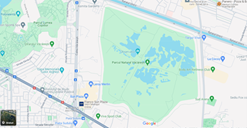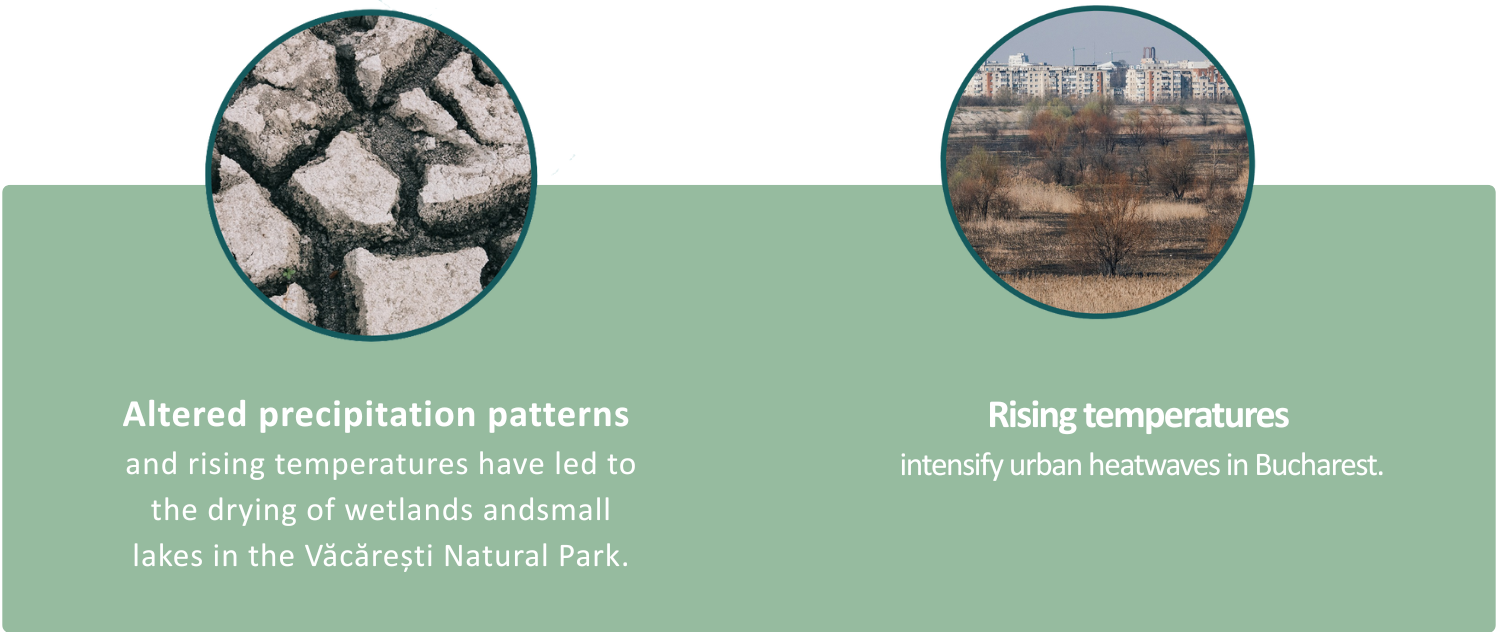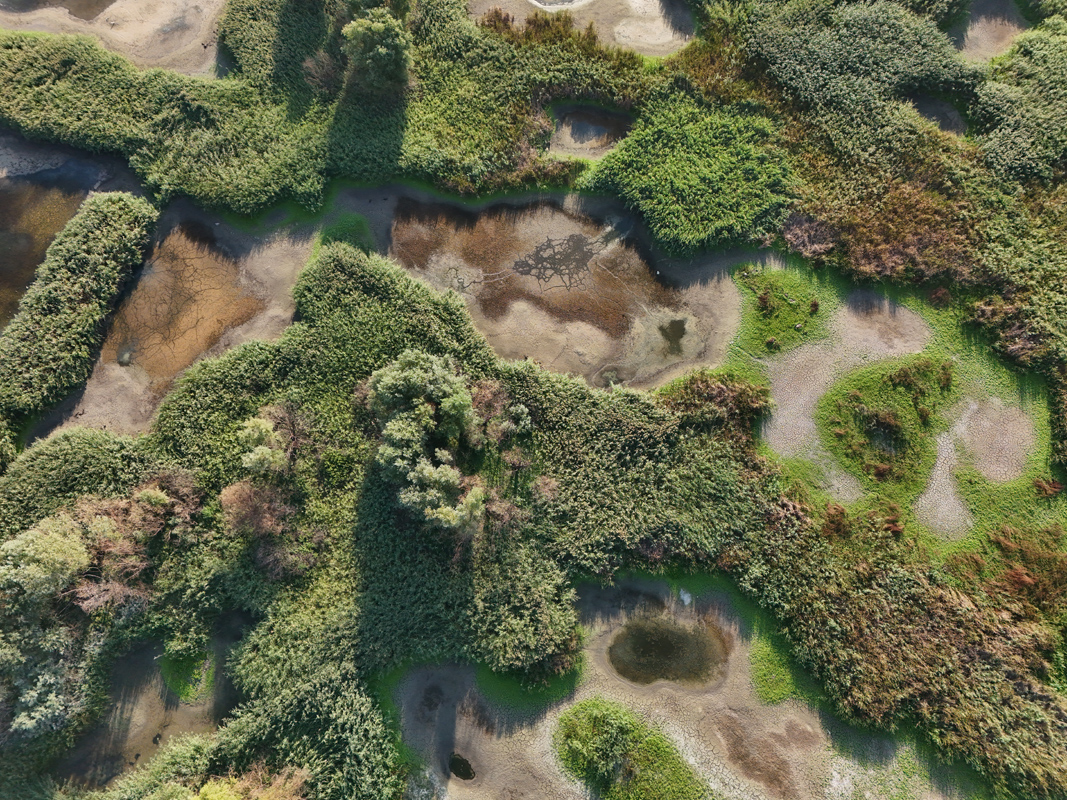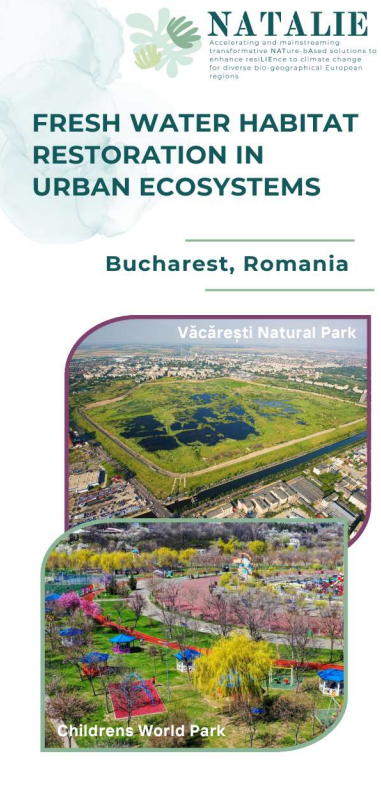DS#2 - Vacaresti Natural Park. Romania
-
This page is also available in Romanian

This case study consists of a Demonstrator Site and a Follower Site.
DS#2 - "Vacaresti Natural Park" (Romania)

The case study in 5 minutes

Quote


Location
The demonstration site, Văcărești Nature Park (VNP), is located in the city of Bucharest, Romania. It concerns an urban area (biogeographical type: continental) measuring 183ha.


© Google maps

Description of the area
In a nutshell:
- First urban nature reserve in Romania
- 183 hectares
- Home to a rich variety of flora and fauna
- Role in regulating urban heatwaves in Bucharest

Climatic Challenges


Planned activities
The first objective in the Văcărești Nature Park is to restore the network of temporary ponds of the park using the rainwater. The water will be collected from a shopping mall`s roof -SUN PLAZA- very close to the park. The intervention will help restore the temporary ponds (habitats for amphibians and specific flora) lost in the past years, and will contribute to the conservation of endangered species. The second objective is to design a network of raingardens fed by the rainwater collected and channeled from the park’s enbankments.
The activities to be implemented are:
• Seasonal rainwater collection and storage (inside and outside the national park); ensuring a good quality of rainwater by market testing for regular impurities and possible contaminants.
• Design and validate the bio-filtration system, in conformity with local conditions;
• Selecting the areas of building ponds as a result of local studies performed;


• Restoring wetland zones of VNP lost in the last years due to aridization;
• Developing a strategy for connecting the VNP to the green blue infrastructure of the city (interconnected activities within FL#2 (Children’s World Park-CWP) and other potential green areas along the Dâmbovița River.
• Consistent actions and innovative social engagement together with local communities and selected stakeholders, in order to improve knowledge on the NBSs and responsibility for the environment activities;
• Development of various dialogues with stakeholders within the different events organized by the project team.



Progress
Field Studies and Technical Basis
The CS #2 team initiated the necessary studies to support the planned interventions. These included:
• Topographic surveys
• Water quality analyses
• Rainwater budget evaluations
• Soil studies
At the same time, meetings with stakeholders allowed for discussions on preliminary technical solutions.
Biodiversity Monitoring and Technical Proposal
CS #2's team of biologists began field monitoring focused on key species. This enabled the development of the first technical proposal for a system integrating water pumping, biofiltration, and reuse, aimed at restoring temporary ponds.
Technical Sketch of the Nature-Based Solution (NBS) – Văcărești

Ambition
Ambition during the project
1.Cooperation and knowledge sharing within the project team and selected local stakeholders for design, implementation and impact monitoring of the NBSs,
2. Enhance community awareness and knowledge base for NBS application and engagement of stakeholders in the process, for sustainability of the results on long term,
3. Validate the results and establish a monitoring scheme and adaptive management plan to assess the efficiency of the NBS implemented,
4.Create a solid, evidence-based reference for upscaling the results in regional, national and other Eastern European contexts.
Ambition after the project
1. The pilot NBS will help establishing the base for the blue-green Bucharest path, supporting biodiversity,mitigating the “heat islands’ and improving nature conditions for recreation and sports.
2. By innovative rainwater management, the pilot NBS will improve the water resilience, including quality of water in the VNP,
3. The NATALIE NBS should reduce the urban heat in that area, contributing to the cooling effects during increasing summer heatwaves,
4.The NBSs in VNP provide educational opportunities for schools, community groups, and the public to learn about ecology, environmental sustainability, and the importance of biodiversity within their area (including community long term engagement),
5.Well designed and implemented NBSs will demonstrate cost-effective solutions for urban challenges, such as rain/stormwater management, and climate change adaptation, potentially contributing not only to improved wellbeing but also to cost savings on long-term (health, avoided damages due to extreme events, etc.).









